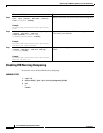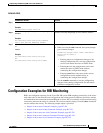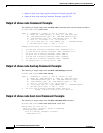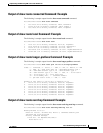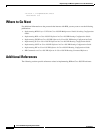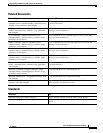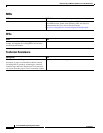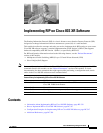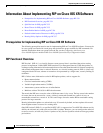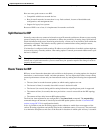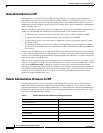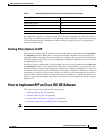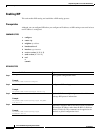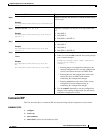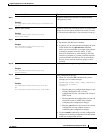
Implementing RIP on Cisco IOS XR Software
Information About Implementing RIP on Cisco IOS XR Software
RC-334
Cisco IOS XR Routing Configuration Guide
OL-14356-01
Information About Implementing RIP on Cisco IOS XR Software
• Prerequisites for Implementing RIP on Cisco IOS XR Software, page RC-334
• RIP Functional Overview, page RC-334
• Split Horizon for RIP, page RC-335
• Route Timers for RIP, page RC-335
• Route Redistribution for RIP, page RC-336
• Default Administrative Distances for RIP, page RC-336
• Routing Policy Options for RIP, page RC-337
Prerequisites for Implementing RIP on Cisco IOS XR Software
The following prerequisite must be met for implementing RIP on Cisco IOS XR software. You must be
in a user group associated with a task group that includes the proper task IDs for RIP commands. For
detailed information about user groups and task IDs, see the Configuring AAA Services on
Cisco IOS XR Software module of the Cisco IOS XR System Security Configuration Guide.
RIP Functional Overview
RIP Version 1 (RIP v1) is a classful, distance-vector protocol that is considered the easiest routing
protocol to implement. Unlike OSPF, RIP broadcasts User Datagram Protocol (UDP) data packets to
exchange routing information in internetworks that are flat rather than hierarchical. Network complexity
and network management time is reduced. However, as a classful routing protocol, RIP v1 allows only
contiguous blocks of hosts, subnets or networks to be represented by a single route, severely limiting its
usefulness.
RIP v2 allows more information carried in RIP update packets, such as support for:
• Route summarization
• Classless interdomain routing (CIDR)
• Variable-length subnet masks (VLSMs)
• Autonomous systems and the use of redistribution
• Multicast address 224.0.0.9 for RIP advertisements
The metric that RIP uses to rate the value of different routes is hop count. The hop count is the number
of routers that can be traversed in a route. A directly connected network has a metric of zero; an
unreachable network has a metric of 16. This small range of metrics makes RIP an unsuitable routing
protocol for large networks.
Routing information updates are advertised every 30 seconds by default, and new updates discovered
from neighbor routers are stored in a routing table.
Only RIP Version 2 (RIP v2), as specified in RFC 2453, is supported on Cisco IOS XR software and, by
default, the software only sends and receives RIP v2 packets. However, you can configure the software
to send, or receive, or both, only Version 1 packets or only Version 2 packets or both version type packets
per interface.



